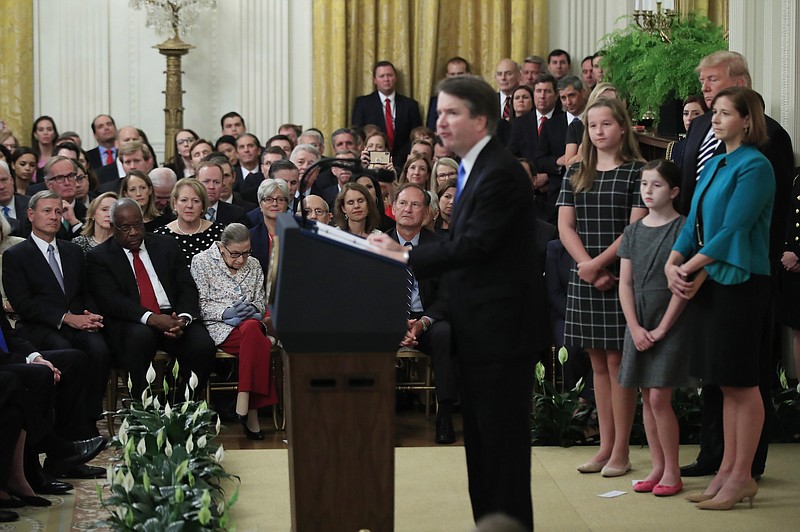WASHINGTON - In the recent Supreme Court nomination showdown, American institutions underwent a stress test.
The Senate Judiciary Committee - which must work properly for the legal system to work properly - became a writhing heap of serpentine partisanship. The Supreme Court - whose judgments are only imposed through the deference of other institutions - was dragged into the realm of low politics. And the media - the essential lens through which we view all else - was too often perceived as a participant in the drama.
Consider two recent stories in The New York Times. The first was a 13,000-word dissection of Donald Trump's financial history that revealed long-standing habits of deception and corruption. It was newspaper journalism at its best - a serious investment of talent and resources to expand the sum of public knowledge.
Compare this with the Times' expose on a bar fight 33 years ago in which Brett Kavanaugh allegedly threw ice at another patron. Apparently there was no editor willing to say, "What you have turned up is trivial. Try harder." And there was no editor who was sufficiently bothered that one name on the byline, Emily Bazelon, was a partisan who had argued on Twitter that Kavanaugh would "harm the democratic process & prevent a more equal society."
Donald Trump's claim of a partisan press was strengthened when The New Yorker published an accusation of first-degree penis exposure that no one else cited in the article could directly confirm. The New York Times, to its credit, had initially held off on publishing this unsupported allegation. Meanwhile, The New Yorker's Ronan Farrow concluded of the accuser, "This is not the behavior of someone who is fabricating something." This judgment substituted for journalistic principles such as the need for multiple sources and corroborating evidence.
The reputation of journalism was weakened when news outlets covered a hostile tweet disputing the details of Kavanaugh's lost virginity as though it contributed to some broader case. The reputation of journalism was weakened when MSNBC interviewed one woman about her unsupported claims of routine gang rapes in high school attended by Kavanaugh, only to have the accuser walk back many of her accusations.
Speaking of the Kavanaugh nomination, Brian Stelter of CNN observed: "Some individual journalists were, and there were many, many commentators that were lining up against him. And I think the weight of that commentary made it seem like there was a big chunk of the media out to get him, out to take down his nomination. I don't think editors and bosses in newsrooms were trying to tank his nomination, but I do think there were a lot of individual journalists who were really disturbed by the allegations."
I was disturbed by the allegations, and said so as a commentator. But I think some editors and bosses in newsrooms did not do enough to prevent the lowering of journalistic standards in service to what many journalists clearly regarded as a good cause. And I don't think that even commentators should be exempt from standards of basic fairness and civility. It was offensive for CNN political contributor Joan Walsh to tweet of Kavanaugh that "he is a pig and he has to go," just as it was offensive for Fox News contributor Kevin Jackson to call Kavanaugh's accusers "lying skanks." Opinion journalism is not a license for calumny.
It is easy to say that Twitter is poison (which it can be). But the deeper problem lies in the answer to a deeper question: Is journalism a profession that serves the public by maintaining high standards, or is it a social construct that should be redesigned to directly serve certain social goods? Some argue that all journalism involves bias, either hidden or revealed. But it is one thing to say that objectivity and fairness are ultimately unreachable. It is another to cease grasping for them.
Washington Post Writers Group
